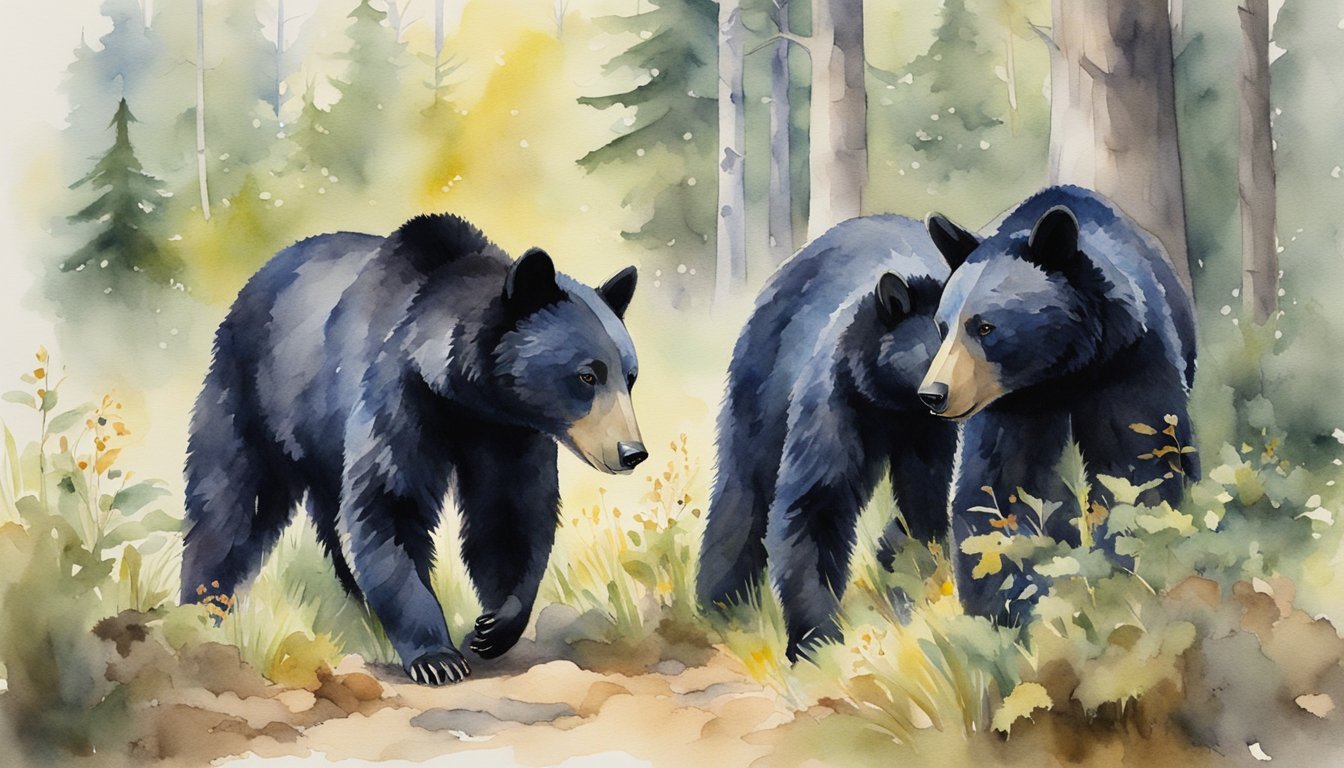Black Bear Basics
Black bears, scientifically known as Ursus americanus, are a widely distributed species in North America, especially prevalent in Canadian forests and North American mountain ranges. Their ecology, including diet and reproduction, is essential to understanding how they interact with their habitat.
Identification and Distribution
Black bears are the most common bears in North America. They are recognized by their size, which can range significantly with males typically weighing between 130-660 pounds and females 90-180 pounds. Various subspecies exhibit colors from jet black to cinnamon, brown, and even white in the case of the rare Kermode or “spirit” bear. The blue-gray colored Glacier bear is another subspecies of the American black bear. Despite their name, brown bears and grizzly bears are separate species. Black bears have shorter claws and ears compared to their grizzly counterparts. These bears are widely distributed across North America, from Canada to parts of Mexico, inhabiting forests, wetlands, and even swamps.
Diet and Foraging
These omnivorous animals have diets that vary seasonally. They forage on a wide range of foods, from plant materials like berries and nuts to animal protein such as insects, fish, and mammals. Black bears possess a sensational sense of smell which greatly aids in locating food. For details on their diet and foraging behaviors, refer to the BearWise resources at bearwise.org.
Reproduction and Lifecycle
Black bears typically mate during the summer months, and females give birth during winter hibernation, usually to two to three cubs. Cubs are born blind and dependent on their mother for warmth and nourishment. By the age of 1-2 years, the cubs will leave the mother to establish their own territories. Black bear populations are healthy across their range, and they do not face the same level of threat as many bear species worldwide. However, human-bear conflicts can arise, so understanding bear behavior is key for coexistence. For more on reproduction and life cycle, the North American Bear Center offers comprehensive details.
Black Bear Behavior and Interaction

Understanding the behavior patterns and interactions of black bears with their environment and humans is crucial for their preservation and public safety.
Hibernation Patterns
Black bears exhibit remarkable hibernation behaviors typically from late fall to spring. During this time, they retreat to dens, which could be hollowed-out tree cavities, under logs or even culverts. Prior to hibernation, bears enter a phase called hyperphagia, where they significantly increase their food intake to build up fat reserves. The bear’s diet is omnivorous; they consume acorns, berries, nuts, and, when available, salmon, which provide the high energy content necessary for fat accumulation. As winter approaches, bears may lose up to 30% of their body weight during hibernation, surviving on these fat stores.
Human and Bear Encounters
Incidents between humans and bears are often a result of bears being drawn to campsites or residential areas by the smell of food or garbage. Black bears are generally less aggressive than other bear species, but can cause injury if they feel threatened; most bear attacks are defensive rather than predatory. Understanding bear behavior and avoiding the attraction of bears with human food or garbage can minimize these encounters. Black bears are also known to climb trees, which they may do as both a means of finding food and evading danger.
Conservation Efforts
To protect black bears and maintain their habitats, conservation efforts are essential. Habitat destruction can lead to increased bear-human interaction, which typically does not end well for the bear. Conservation strategies include protecting their natural food sources and habitats, establishing regulations against feeding bears, and creating bear-wise communities to promote coexistence. With these efforts, it’s possible to manage home ranges and territories effectively, allowing bears to continue their essential role in the ecosystem.

